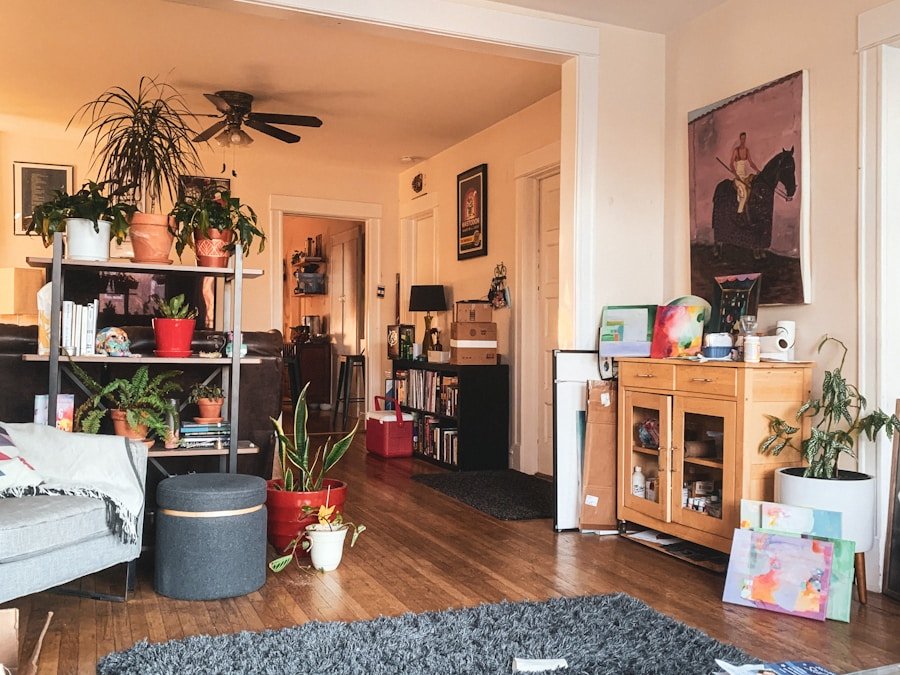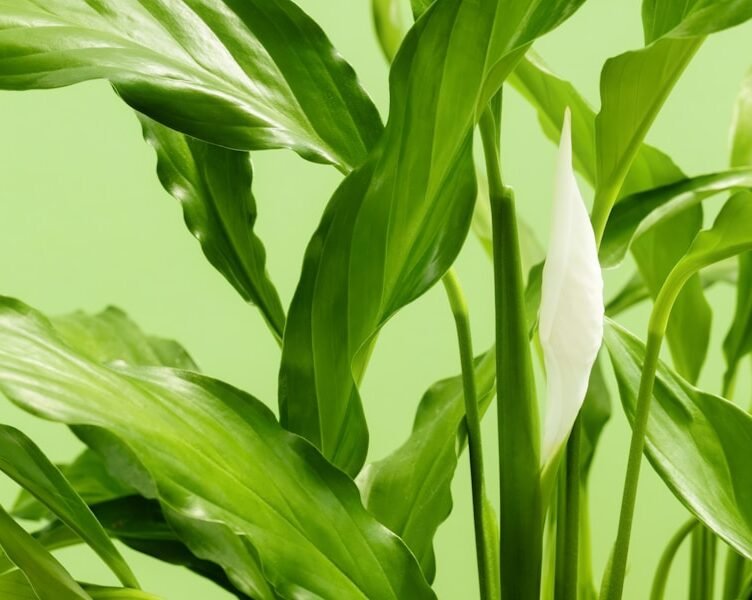Indoor medicinal plants provide a diverse array of benefits for health and wellness. They offer natural solutions for common health issues and contribute to a healthier indoor environment. Many of these plants have been utilized for centuries in traditional medicine practices, renowned for their therapeutic properties.
They can help purify the air, alleviate stress, and promote overall well-being. Moreover, caring for indoor medicinal plants serves as a reminder to prioritize self-care and mindfulness, as they require regular attention and nurturing. In addition, indoor medicinal plants offer a cost-effective and sustainable approach to managing health and wellness.
Instead of relying on pharmaceuticals or synthetic remedies, they provide a natural and holistic method of healing. By integrating these plants into your indoor space, you can create an environment that supports physical, mental, and emotional well-being. Overall, the benefits of indoor medicinal plants are extensive and can have a profoundly positive impact on your overall health and wellness.
Key Takeaways
- Indoor medicinal plants can be used to create a healing environment and treat common ailments.
- Choosing the right medicinal plants for indoor use is important for maximizing their healing benefits.
- Indoor medicinal plants can be incorporated into holistic healing practices and everyday wellness routines.
- Caring for indoor medicinal plants is essential to ensure they continue to provide healing benefits.
- Indoor medicinal plants offer a natural and accessible way to promote health and well-being at home.
Choosing the Right Medicinal Plants for Indoor Use
Healing Properties of Popular Indoor Medicinal Plants
Aloe vera, for example, is known for its soothing and healing properties for skin conditions such as burns and cuts. Lavender is often used for its calming effects and can help to reduce stress and anxiety. Chamomile is another popular indoor medicinal plant that is commonly used to promote relaxation and improve sleep quality. Peppermint, on the other hand, is known for its ability to aid in digestion and alleviate symptoms of nausea and headaches.
Choosing the Right Plants for Your Indoor Environment
In addition to considering the health benefits of indoor medicinal plants, it’s also important to choose plants that are well-suited for indoor environments. Some plants thrive in low light conditions, while others require more sunlight. It’s essential to research the specific care requirements of each plant to ensure that they will thrive in your indoor space.
Maximizing Healing Benefits and Creating a Nurturing Environment
By choosing the right medicinal plants for indoor use, you can maximize their healing benefits and create a nurturing environment for wellness.
Creating a Healing Environment with Indoor Medicinal Plants
Creating a healing environment with indoor medicinal plants involves more than just placing them in your space. It’s essential to consider the overall design and layout of your indoor area to maximize the healing benefits of these plants. One way to create a healing environment with indoor medicinal plants is to strategically place them in areas where you spend the most time.
For example, placing aloe vera in the kitchen can be beneficial for treating minor burns or cuts that may occur while cooking. Similarly, placing lavender or chamomile in the bedroom can help promote relaxation and improve sleep quality. In addition to placement, it’s also important to consider the overall aesthetic of your indoor space when incorporating medicinal plants.
By choosing decorative pots or planters for your indoor medicinal plants, you can create a visually appealing and calming environment. Furthermore, incorporating other elements of nature such as natural light, water features, or natural materials can further enhance the healing environment. Overall, creating a healing environment with indoor medicinal plants involves thoughtful consideration of placement and design to maximize their healing benefits.
Using Indoor Medicinal Plants for Common Ailments
| Plant Name | Healing Properties | Usage |
|---|---|---|
| Aloe Vera | Heals burns and skin irritations | Apply gel directly to affected area |
| Lavender | Relieves stress and anxiety | Use in aromatherapy or make tea |
| Eucalyptus | Clears respiratory issues | Use in steam inhalation or make tea |
| Peppermint | Relieves headaches and digestive issues | Use in tea or inhale the aroma |
Indoor medicinal plants can be used to treat a wide range of common ailments and health issues. Aloe vera, for example, is commonly used to soothe sunburns, minor cuts, and skin irritations due to its anti-inflammatory and cooling properties. Lavender is often used to alleviate stress, anxiety, and insomnia by promoting relaxation and calmness.
Chamomile is known for its ability to reduce inflammation, improve digestion, and promote better sleep quality. Peppermint is commonly used to alleviate symptoms of nausea, headaches, and digestive issues due to its soothing and cooling effects. In addition to treating specific ailments, indoor medicinal plants can also be used as natural remedies for everyday wellness.
For example, incorporating peppermint into your daily routine can help improve digestion and alleviate symptoms of indigestion or bloating. Similarly, using lavender essential oil in a diffuser can help promote relaxation and reduce stress after a long day. By using indoor medicinal plants for common ailments and everyday wellness, you can take a natural and holistic approach to managing your health.
Incorporating Indoor Medicinal Plants into Holistic Healing Practices
Incorporating indoor medicinal plants into holistic healing practices involves integrating them into various aspects of your wellness routine. This can include using them in aromatherapy, herbal remedies, or as part of mindfulness practices such as meditation or yoga. Aloe vera gel, for example, can be used topically as a natural remedy for skin irritations or added to homemade skincare products for its soothing properties.
Lavender essential oil can be used in aromatherapy diffusers or added to bathwater to promote relaxation and reduce stress. Furthermore, incorporating indoor medicinal plants into holistic healing practices can also involve using them in herbal teas or tinctures for their healing properties. Chamomile tea, for example, is commonly used to promote relaxation and improve sleep quality due to its calming effects.
Peppermint tea is often used to aid in digestion and alleviate symptoms of nausea or headaches. By incorporating indoor medicinal plants into holistic healing practices, you can take a comprehensive approach to managing your health and wellness.
Caring for Indoor Medicinal Plants to Maximize Healing Benefits
Understanding Plant-Specific Care Requirements
Different plants have unique needs. For instance, Aloe vera flourishes in bright indirect sunlight and requires well-draining soil to prevent root rot. Lavender, on the other hand, prefers full sunlight and well-draining soil with minimal water to prevent root rot. Chamomile requires moderate sunlight and regular watering to keep the soil moist but not waterlogged, while Peppermint thrives in partial shade with consistently moist soil.
Maintenance and Pruning for Healthy Growth
In addition to providing the right growing conditions, regular pruning and maintenance are vital to promote healthy growth and maximize the healing benefits of indoor medicinal plants. This involves removing dead or yellowing leaves, repotting when necessary, and fertilizing as needed to ensure the plants remain healthy and vibrant.
Reaping the Rewards of Proper Care
By caring for indoor medicinal plants properly, you can ensure they continue to provide healing benefits for your overall health and wellness. With the right care, these plants will thrive, and you can enjoy their medicinal benefits for years to come.
Integrating Indoor Medicinal Plants into Everyday Wellness Routines
Integrating indoor medicinal plants into everyday wellness routines involves finding creative ways to incorporate them into your daily life. This can include using them in cooking, skincare products, aromatherapy, or herbal remedies to take advantage of their healing properties. For example, adding fresh mint leaves from your indoor peppermint plant to homemade smoothies or salads can provide digestive benefits and add a refreshing flavor.
Using lavender essential oil in a diffuser or adding it to bathwater can help promote relaxation and reduce stress after a long day. Furthermore, integrating indoor medicinal plants into everyday wellness routines can also involve using them in homemade skincare products such as lotions or balms for their soothing and healing properties. Aloe vera gel can be used topically to soothe sunburns or added to homemade skincare products for its moisturizing effects.
Chamomile tea can be used as a natural toner or added to bathwater for its calming effects on the skin. By integrating indoor medicinal plants into everyday wellness routines, you can take a natural and holistic approach to managing your health and well-being. In conclusion, indoor medicinal plants offer a wide range of benefits for healing and wellness.
By choosing the right plants for indoor use, creating a healing environment with them, using them for common ailments, incorporating them into holistic healing practices, caring for them properly, and integrating them into everyday wellness routines, you can maximize their healing benefits and take a natural and holistic approach to managing your health and well-being. Whether you’re looking to soothe minor ailments or promote overall well-being, indoor medicinal plants offer a sustainable and cost-effective way to support your health and wellness.
FAQs
What are indoor medicinal plants?
Indoor medicinal plants are plants that are grown indoors and have medicinal properties. These plants are often used in traditional medicine and alternative healing practices.
How can indoor medicinal plants be used for healing?
Indoor medicinal plants can be used for healing in a variety of ways, including making teas, tinctures, and salves from the leaves, flowers, and roots of the plants. These preparations can be used to treat a wide range of ailments, from digestive issues to skin conditions.
What are some common indoor medicinal plants?
Some common indoor medicinal plants include aloe vera, lavender, chamomile, and peppermint. These plants are known for their healing properties and are often used in natural remedies.
Are indoor medicinal plants safe to use for healing?
When used properly, indoor medicinal plants can be safe for healing. However, it’s important to research the specific plant and its potential side effects before using it for medicinal purposes. It’s also important to consult with a healthcare professional before using any new herbal remedy.
Can indoor medicinal plants be grown indoors year-round?
Yes, many indoor medicinal plants can be grown indoors year-round, as long as they receive the proper care and sunlight. Some plants may require additional lighting or specific growing conditions to thrive indoors.





